Not Just Deserts
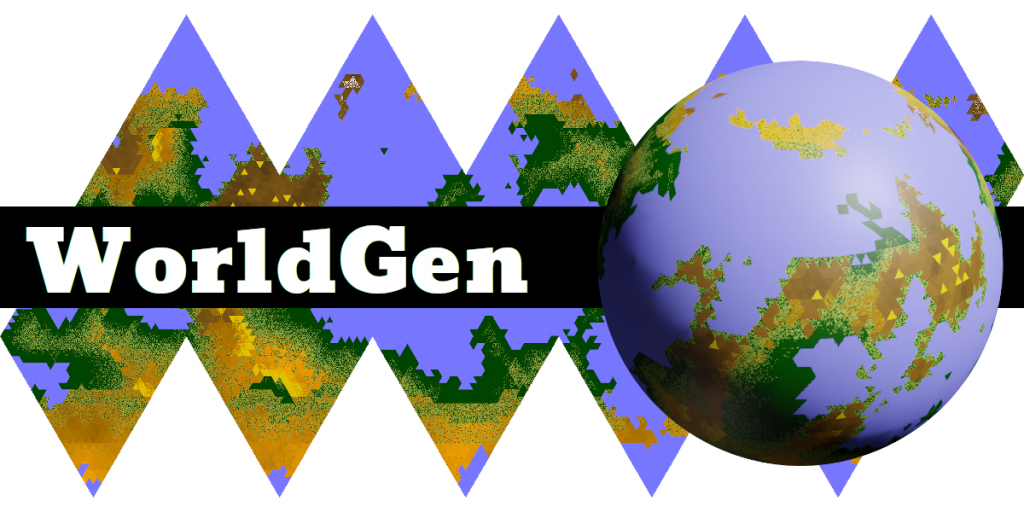
Further work is progressing on WorldGen to add support for vegetation on a world. So far, the choice has been water or barren desert. Adding vegetation is a bit more complicated.
As mentioned before, I need to link the randomly generated textual description of the world to the randomly generated map, and have them both at least vaguely consistent.
There’s a number of factors that need to be taken into account:
- The level of life on the world. If life has just started to crawl out of the oceans, then there may be some fungal forests or molds around the shores, but not much else.
- The overall world temperature. A world that is overly hot or cold may have large regions which don’t support life.
- The height of a tile. Each individual tile has its own height, which will modify the climatic zone.
- The amount of available moisture. Wind patterns will carry moisture from oceans, providing fertile regions where vegetation can grow.
So far, I’ve mostly worked on crude wind modelling, mapping how moisture moves across the world according to coriolis patterns. Currently, only East – West patterns of movement are modelled according to latitude. Moisture can move North – South, but all North – South movement is considered equal.
Each tile above water is considered to have maximal moisture, and then surrounding tiles gain some of that – iterating until all tiles have been computed. Mountains block movement, so there should be rain shadows behind mountainous regions.
The following examples show some variants in water cover, temperature and vegetation types. Note that this is being worked on for detailing Meso Arean world types, which are a form of early Mars. Since I’m using this as a playground for the models, there’s probably more vegetation at the moment than I actually want such worlds to ultimately have.
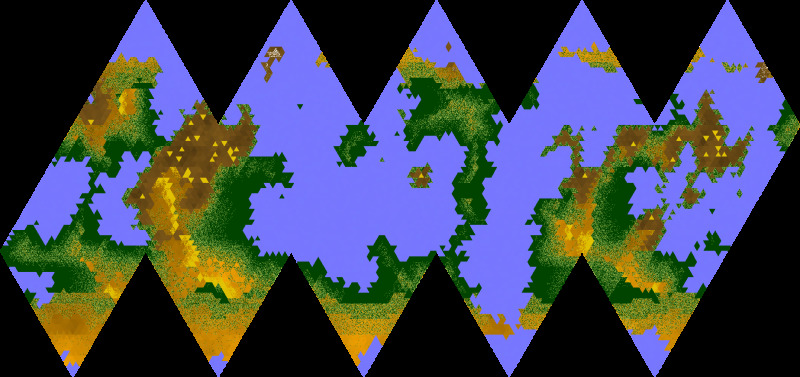

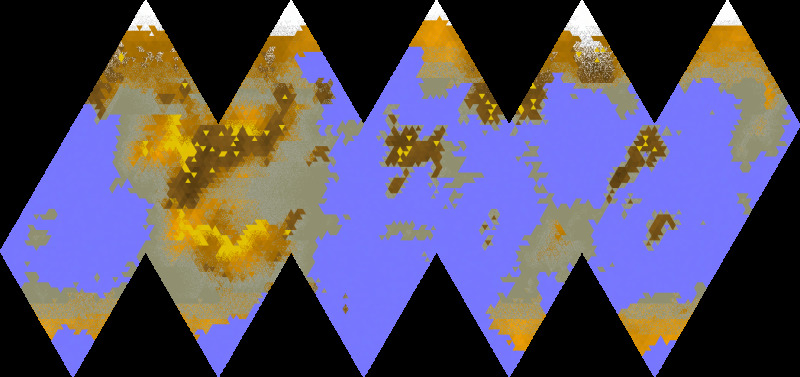
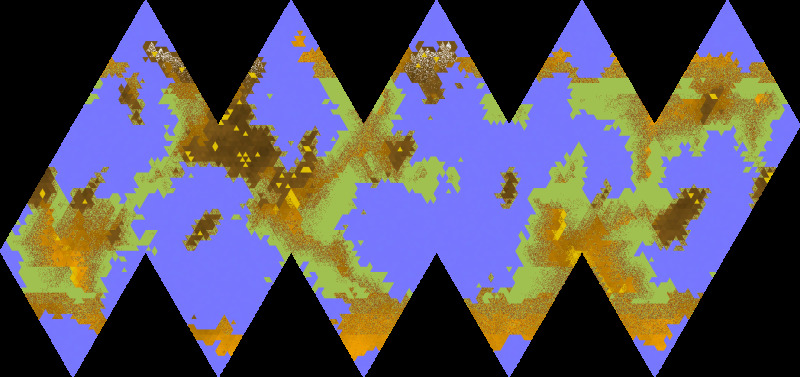
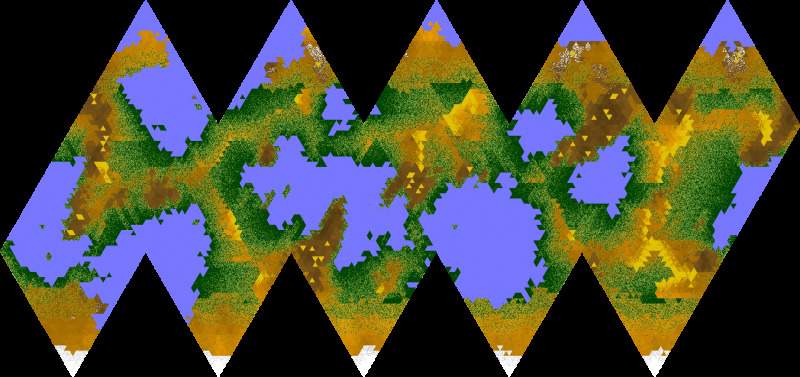

I don’t think desert regions are being suitable generated at the moment, and because of coastal regions always being considered wet, it rarely generates deserts right next to a sea.
I’m still undecided how much detail I want to go into for the type of vegetation for each tile. Currently it’s just heavy or light vegetation, but I might expand that to jungle, woods, scrubland and grassland. This isn’t so important for figuring out what the world looks like form orbit, but may be useful (much) later if I want to start adding detail to the surface for exploration.
I’m also not happy with the mountains – they’re based on the underlying fractal map, rather than being based on plate tectonics, so just appear randomly.
One final point – vegetation doesn’t always have to be green. I should be considering stellar types since that will have an affect on the colour of photosynthetic plants. This is something that can be passed down from the text or data layers (see previous post), and should be a simple case of modifying the colour that is painted.